1. Min SK, Kim SH, Kim JH. Preparation and swelling behavior of biodegradable poly(aspartic acid)-based hydrogel. J Ind Eng Chem. 2000; 6:276–279.
2. Goddard JM, Hotchkiss JH. Polymer surface modification for the attachment of bioactive compounds. Progress in Polymer Science. 2007; 32:698–725.

3. Champion JA, Walker A, Mitragotri S. Role of particle size in phagocytosis of polymeric microspheres. Pharm Res. 2008; 25:1815–1821. PMID:
18373181.

4. Elamanchili P, Diwan M, Cao M, Samuel J. Characterization of poly(D,L-lactic-co-glycolic acid) based nanoparticulate system for enhanced delivery of antigens to dendritic cells. Vaccine. 2004; 22:2406–2412. PMID:
15193402.

5. Akagi T, Shima F, Akashi M. Intracellular degradation and distribution of protein-encapsulated amphiphilic poly(amino acid) nanoparticles. Biomaterials. 2011; 32:4959–4967. PMID:
21482432.

6. Foged C, Sundblad A, Hovgaard L. Targeting vaccines to dendritic cells. Pharm Res. 2002; 19:229–238. PMID:
11934227.
7. Panyam J, Labhasetwar V. Biodegradable nanoparticles for drug and gene delivery to cells and tissue. Adv Drug Deliv Rev. 2003; 55:329–347. PMID:
12628320.

8. Matsusaki M, Hiwatari K, Higashi M, Kaneko T, Akashi M. Stably-dispersed and surface-functional bionanoparticles prepared by self-assembling amphipaethic polymers of hydrophilic poly(g-glutamic acid) bearing hydrophobic amino acids. Chemistry Letters. 2004; 33:398–399.
9. Akagi T, Wang X, Uto T, Baba M, Akashi M. Protein direct delivery to dendritic cells using nanoparticles based on amphiphilic poly(amino acid) derivatives. Biomaterials. 2007; 28:3427–3436. PMID:
17482261.

10. Giammona G, Pitarresi G, Tomarchio V, Dispenza C, Spadaro G. Synthesis and characterization of water-swellable α,β-polyasparthydrazide derivatives. II. Hydrogels at low crosslinking degree as potential systems for anticancer drug release. Colloid and Polymer Science. 1995; 273:559–564.
11. Nakato T, Yoshitake M, Matsubara K, Tomida M, Kakuchi T. Relationships between structure and properties of poly(aspartic acid)s. Macromolecules. 1998; 31:2107–2113.

12. Nakato T, Kusuno A, Kakuchi T. Synthesis of poly(succinimide) by bulk polycondensation of L-aspartic acid with an acid catalyst. Journal of Polymer Science Part A: Polymer Chemistry. 2000; 38:117–122.
13. Matsubara K, Nakato T, Tomida M. 1H and 13C NMR characterization of poly(succinimide) prepared by thermal polycondensation of l-aspartic acid. Macromolecules. 1997; 30:2305–2312.
14. Horgan A, Saunders B, Vincent B, Heenan RK. Poly(butyl methacrylate-g-methoxypoly(ethylene glycol)) and poly (methyl methacrylate-g-methoxypoly(ethylene glycol)) graft copolymers: preparation and aqueous solution properties. J Colloid Interface Sci. 2003; 262:548–559. PMID:
16256637.
15. Zhu G. Micellization of polystyrene-graft-poly(ethylene oxide) and its mixtures with polystyrene homopolymer in ethanol. European Polymer Journal. 2005; 41:2671–2677.

16. Li P, Yin YL, Li D, Kim SW, Wu G. Amino acids and immune function. Br J Nutr. 2007; 98:237–252. PMID:
17403271.

17. Kidd MT, Kerr BJ, Anthony NB. Dietary interactions between lysine and threonine in broilers. Poult Sci. 1997; 76:608–614. PMID:
9106889.

18. Konashi S, Takahashi K, Akiba Y. Effects of dietary essential amino acid deficiencies on immunological variables in broiler chickens. Br J Nutr. 2000; 83:449–456. PMID:
10858703.
19. Yang SR, Lee HJ, Kim JD. Histidine-conjugated poly(amino acid) derivatives for the novel endosomolytic delivery carrier of doxorubicin. J Control Release. 2006; 114:60–68. PMID:
16828916.

20. Xu Q, An L, Yu M, Wang S. Design and synthesis of a new conjugated polyelectrolyte as a reversible ph sensor. Macromolecular Rapid Communications. 2008; 29:390–395.

21. Jeong JH, Park TG. Poly(L-lysine)-g-poly(D,L-lactic-co-glycolic acid) micelles for low cytotoxic biodegradable gene delivery carriers. J Control Release. 2002; 82:159–166. PMID:
12106986.

22. Stone WL, Mukherjee S, Smith M, Das SK. Therapeutic uses of antioxidant liposomes. Methods Mol Biol. 2002; 199:145–161. PMID:
12094566.

23. Stone WL, Smith M. Therapeutic uses of antioxidant liposomes. Mol Biotechnol. 2004; 27:217–230. PMID:
15247495.

24. Chen CH, Liu DZ, Fang HW, Liang HJ, Yang TS, Lin SY. Evaluation of multi-target and single-target liposomal drugs for the treatment of gastric cancer. Biosci Biotechnol Biochem. 2008; 72:1586–1594. PMID:
18540096.

25. Koike M, Ishino K, Kohno Y, Tachikawa T, Kartasova T, Kuroki T, Huh N. DMSO induces apoptosis in SV40-transformed human keratinocytes, but not in normal keratinocytes. Cancer Lett. 1996; 108:185–193. PMID:
8973593.

26. Paromov V, Kumari S, Brannon M, Kanaparthy NS, Yang H, Smith MG, Stone WL. Protective effect of liposome-encapsulated glutathione in a human epidermal model exposed to a mustard gas analog. J Toxicol. 2011; 2011:109516. PMID:
21776256.

27. Kim SI, Min SK, Kim JH. Synthesis and characterization of novel amino acid-conjugated poly(aspartic acid) derivatives. Bull Korean Chem Soc. 2008; 29:1887–1892.
28. Lee JK, Lee MK, Yun YP, Kim Y, Kim JS, Kim YS, Kim K, Han SS, Lee CK. Acemannan purified from Aloe vera induces phenotypic and functional maturation of immature dendritic cells. Int Immunopharmacol. 2001; 1:1275–1284. PMID:
11460308.

29. Lee YR, Lee YH, Im SA, Kim K, Lee CK. Formulation and characterization of antigen-loaded plga nanoparticles for efficient cross-priming of the antigen. Immune Netw. 2011; 11:163–168. PMID:
21860609.

30. Im SA, Lee YR, Lee YH, Oh ST, Gerelchuluun T, Kim BH, Kim Y, Yun YP, Song S, Lee CK. Synergistic activation of monocytes by polysaccharides isolated from Salicornia herbacea and interferon-gamma. J Ethnopharmacol. 2007; 111:365–370. PMID:
17204386.
31. Lee YH, Lee YR, Kim KH, Im SA, Song S, Lee MK, Kim Y, Hong JT, Kim K, Lee CK. Baccatin III, a synthetic precursor of taxol, enhances MHC-restricted antigen presentation in dendritic cells. Int Immunopharmacol. 2011; 11:985–991. PMID:
21354357.

32. Talmor M, Mirza A, Turley S, Mellman I, Hoffman LA, Steinman RM. Generation or large numbers of immature and mature dendritic cells from rat bone marrow cultures. Eur J Immunol. 1998; 28:811–817. PMID:
9541575.

33. Mora JR. Homing imprinting and immunomodulation in the gut: role of dendritic cells and retinoids. Inflamm Bowel Dis. 2008; 14:275–289. PMID:
17924560.

34. Cai Z, Brunmark AB, Luxembourg AT, Garcia KC, Degano M, Teyton L, Wilson I, Peterson PA, Sprent J, Jackson MR. Probing the activation requirements for naive CD8+ T cells with Drosophila cell transfectants as antigen presenting cells. Immunol Rev. 1998; 165:249–265. PMID:
9850865.

35. Drutman SB, Trombetta ES. Dendritic cells continue to capture and present antigens after maturation in vivo. J Immunol. 2010; 185:2140–2146. PMID:
20644175.

36. Karlsen M, Hovden AO, Vogelsang P, Tysnes BB, Appel S. Bromelain treatment leads to maturation of monocyte-derived dendritic cells but cannot replace PGE2 in a cocktail of IL-1β, IL-6, TNF-α and PGE2. Scand J Immunol. 2011; 74:135–143. PMID:
21449940.

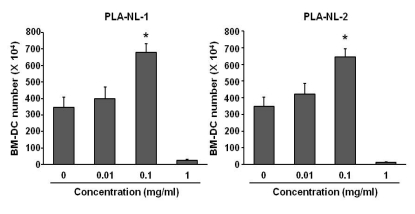
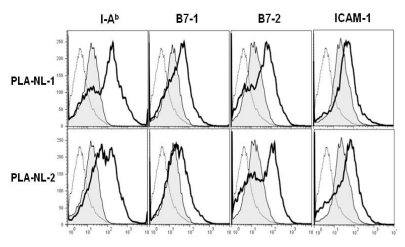
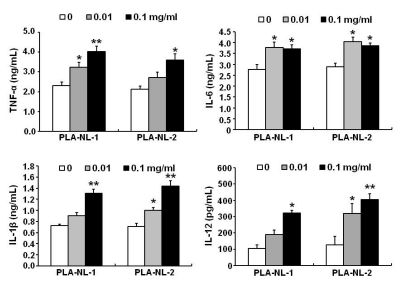
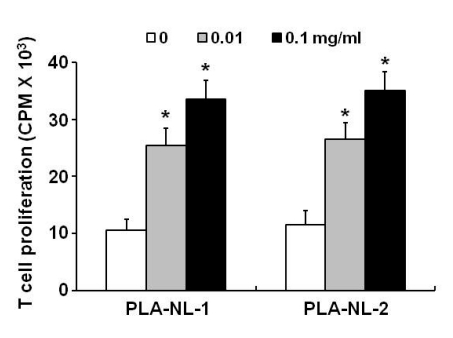
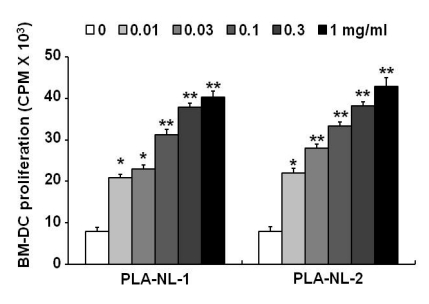




 PDF
PDF ePub
ePub Citation
Citation Print
Print


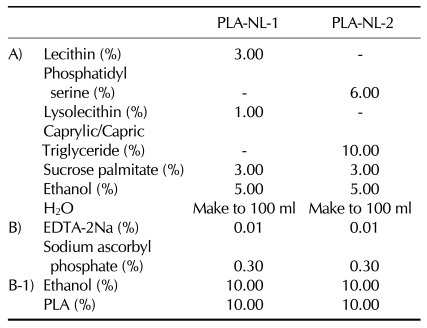
 XML Download
XML Download